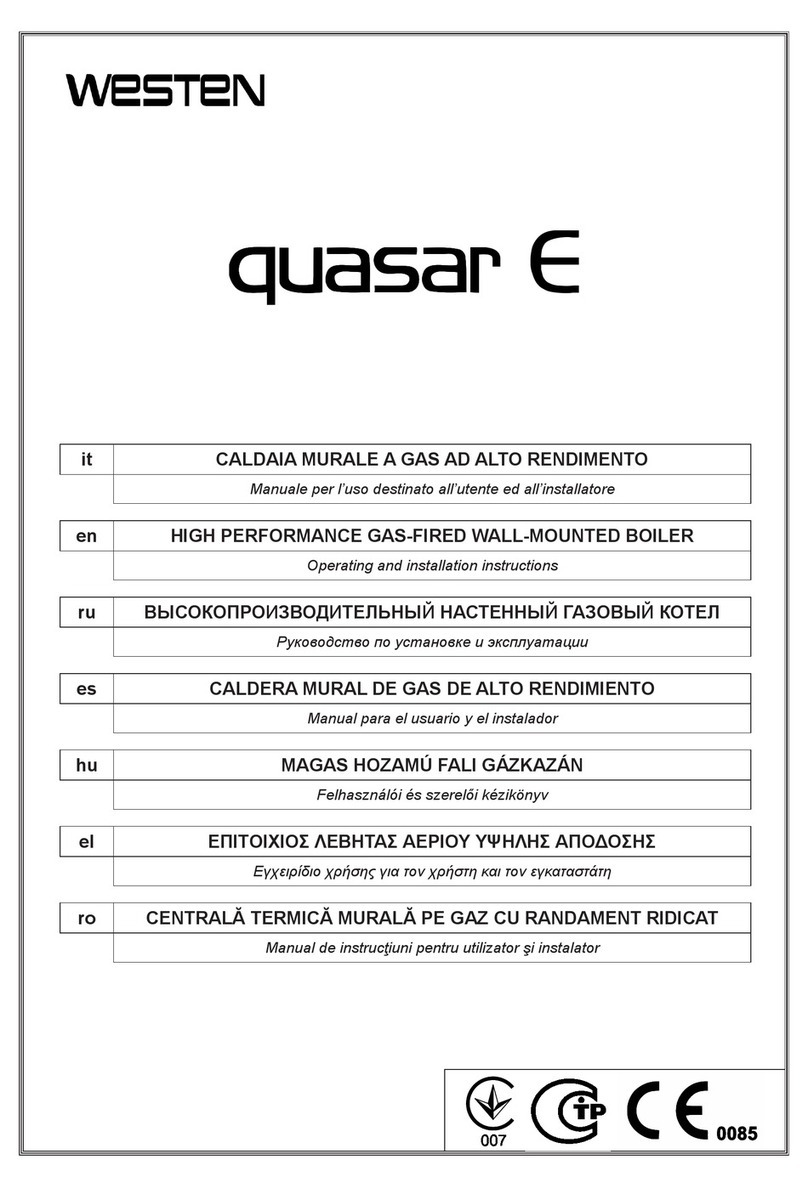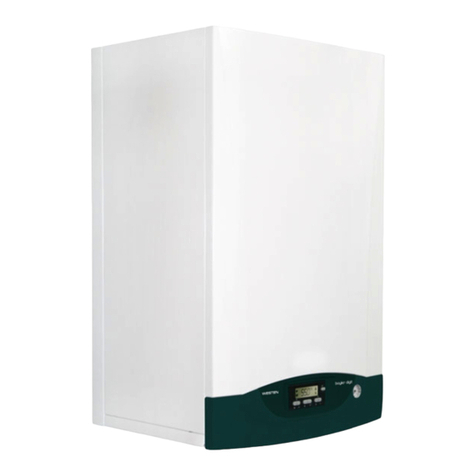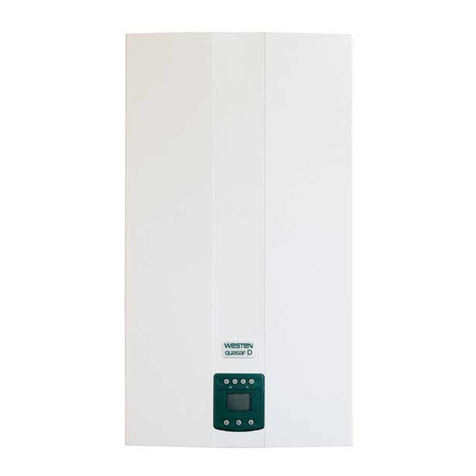
7925.477.3 - GB
INSTRUCTIONS PERTAINING TO THE INSTALLER
The following remarks and instructions are addressed to Service Engineers to help them carry out a faultless installation. In-
structions regarding lighting and operation of the boiler are contained in the ‘Instructions pertaining to the user’ section.
Note that installation, maintenance and operation of the domestic gas appliances must be performed exclusively by qua-
lied personnel in compliance with current standards.
Please note the following:
* This boiler can be connected to any type of double- or single feeding pipe convector plates, radiators, thermoconvectors.
Design the system sections as usual though taking into account the available output / pump head performances, as
shown in chapter 22.
* Do not leave any packaging components (plastic bags, polystyrene, etc.) within children’s reach as they are a potential
source of danger.
* Initial lighting of the boiler must be effected by a Qualied Service Engineer.
Failure to observe the above will render the guarantee null and void.
9. GENERAL INFORMATION
10. INSTRUCTIONS PRIOR TO INSTALLATION
This boiler is designed to heat water at a lower than boiling temperature at atmospheric pressure. The boiler must be con-
nected to a central heating system and, on models withis option, to a domestic hot water supply system in compliance with
its performances and output power.
Before connecting the boiler have the following operations effected:
a) accurate purging of the whole pipework in order to remove any pipe-threading, soldering or solvent deposits which may be
contained in the different sections of the central heating system.
b) careful checking that the boiler is t for operation with the type of gas available. For more details see the notice on the
packaging and the label on the appliance itself.
c) careful checking that the ue terminal draft is appropriate; that the terminal is not obstructed and that no other appliance
exhaust gases are expelled through the same ue duct, unless the ue is especially designed to collect the exhaust gase
coming from more than one appliance, in conformity with the laws and regulations in force.
d) careful checking that, in case the ue has been connected to pre-existing ue ducts, thorough cleaning has been carried
out in that residual combustion products may come off during operation of the boiler and obstruct the ue duct.
To ensure correct operation of the appliance and avoid invalidating the guarantee, observe the following precautions
1. Hot water circuit:
if the water hardness is greater than 20 °F (1 °F = 10 mg calcium carbonate per litre of water) install a polyphosphate or com-
parable treatment system responding to current regulations.
2. Heating circuit
2.1. new system
Before proceeding with installation of the boiler, the system must be cleaned and ushed out thoroughly to eliminate
residual thread-cutting swarf, solder and solvents if any, using suitable proprietary products.
2.2. existing system:
Before proceeding with installation of the boiler, the system must be cleaned and ushed out to remove sludge and
contaminants, using suitable proprietary products.
To avoid damaging metal, plastic and rubber parts, use only neutral cleaners, i.e. non-acid and non-alkaline (e.g. SENTINEL
X400 and X100), proceeding strictly in accordance with the maker’s directions.
Remember that the presence of foreign matter in the heating system can adversely affect the operation of the boiler (e.g. ove-
rheating and noisy operation of the heat exchanger)
IMPORTANT: when connecting an instantaneous boiler (mixed) to a system with solar panels, the maximum tem-
perature of the DHW at the boiler inlet must not be greater than:
• 60°C with a ow limiting device
• 80°C without a ow limiting device









































